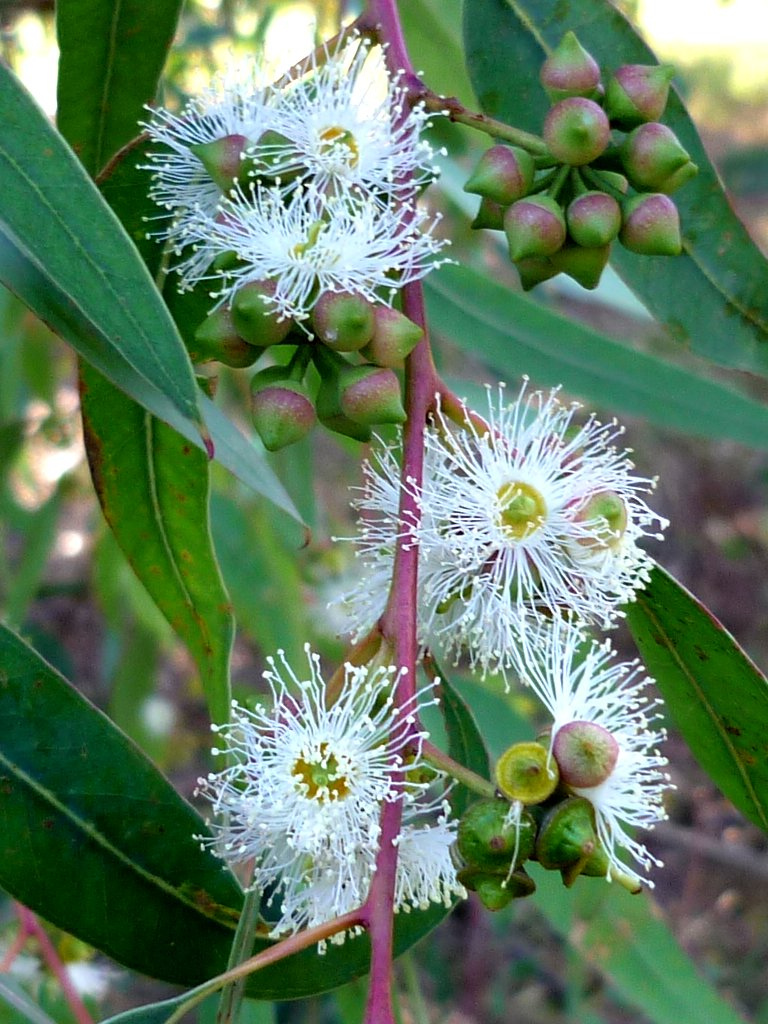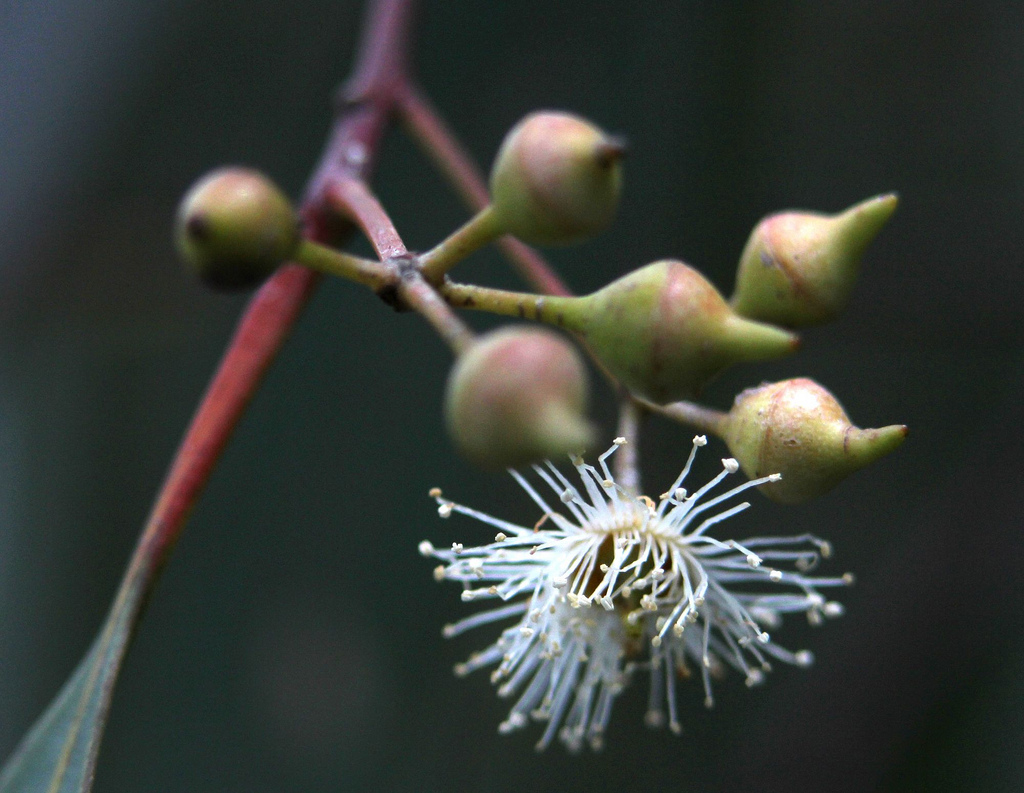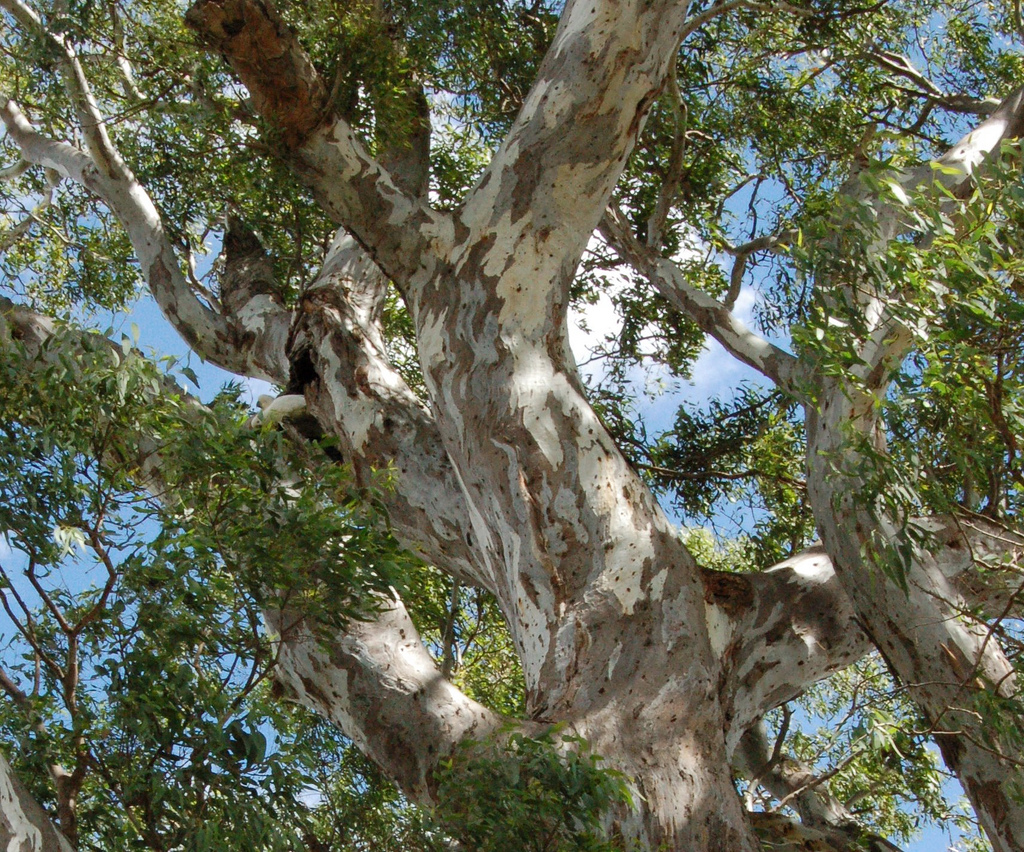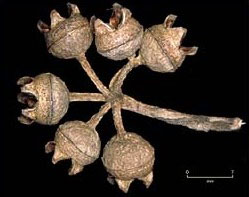Fruits/Seeds
Fruit are without a stalk (pedicellate) to 0.6 cm long and 1 cm wide. Seed is yellow or yellow-brown, cuboid, smooth.
Field Guide
Improve your identification skills. Download your River Red Gum field guide here!

A tall tree to 40 m with smooth bark, mottled, shedding at intervals throughout the year showing white, yellow and grey, becoming roughened at the base.
Frequently a straight tree but can develop more twisted habit in drier conditions.
The tree has a large, dense crown of long and narrow adult leaves, lanceolate in shape or infrequently sickle-shaped, 5 - 30 cm long by 0.7 - 3.2 cm wide, and grey to grey-green on both surfaces. Side veins are prominent and usually at 45° to the leaf midrib, and oil glands are numerous and located separate to the veins.
Its inflorescences (flower heads) are comprised of umbels of 7 to 11 flower buds located at the junction of the leaves and stem with the buds being of ovoid or globular shape and 0.6 - 1.1 cm long by 0.3 - 0.6 cm wide. Buds are green to yellow or cream, and have a prominent tip beak. Flowers are white to cream.
Fruit are without a stalk (pedicellate) to 0.6 cm long and 1 cm wide. Seed is yellow or yellow-brown, cuboid, smooth.
Improve your identification skills. Download your River Red Gum field guide here!

First fully open single flower
Full flowering (record all days)
End of flowering (when 95% of the flowers have faded)
No flowering
Fruits/seeds (record all days)


The species over its whole distribution is distinguished by the seeds which are cuboid and have two seed coats. All other red gums have seeds with a single dark brown to black seed coat.